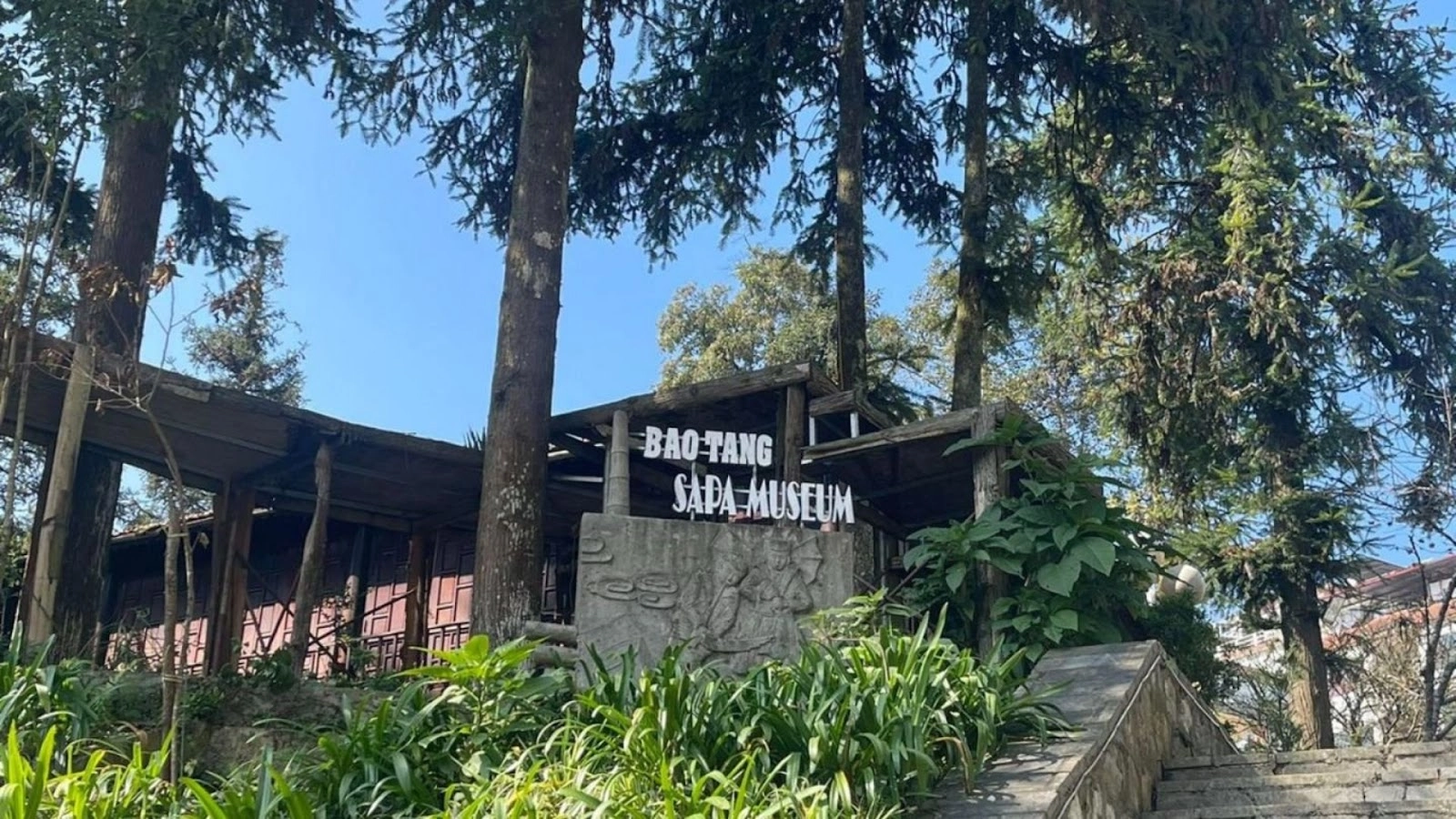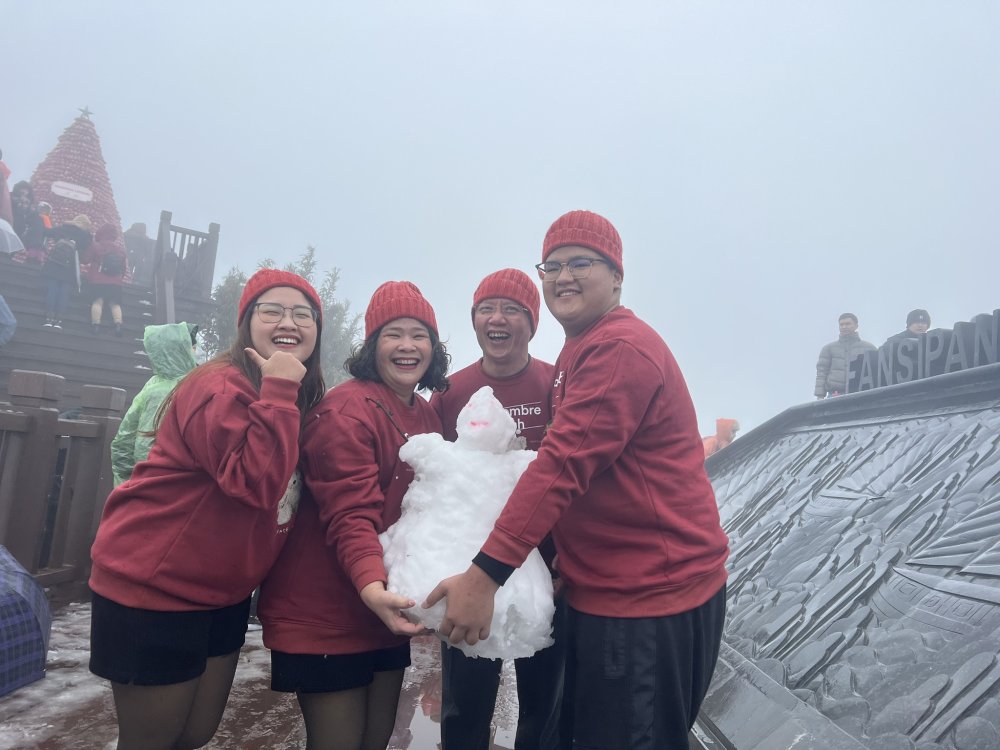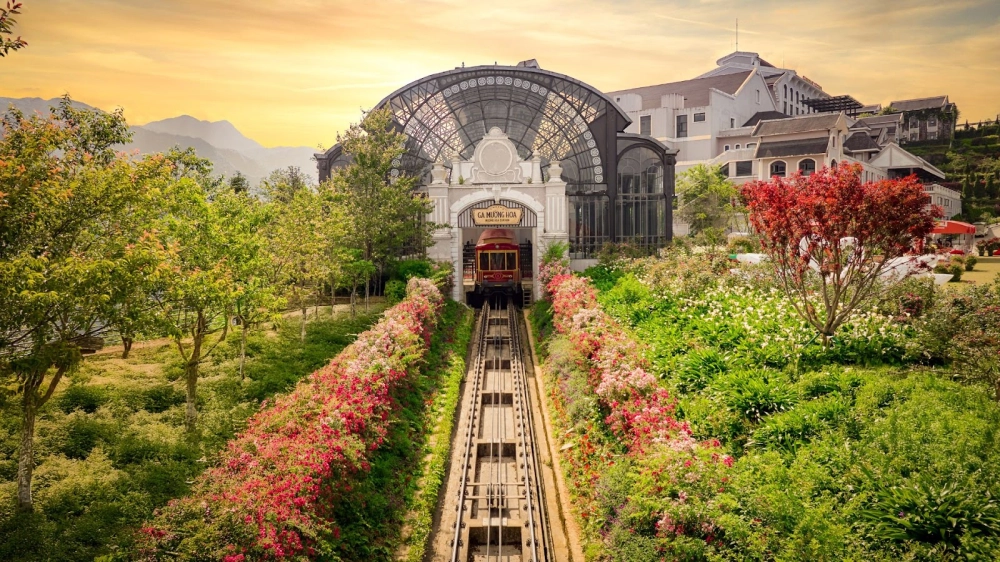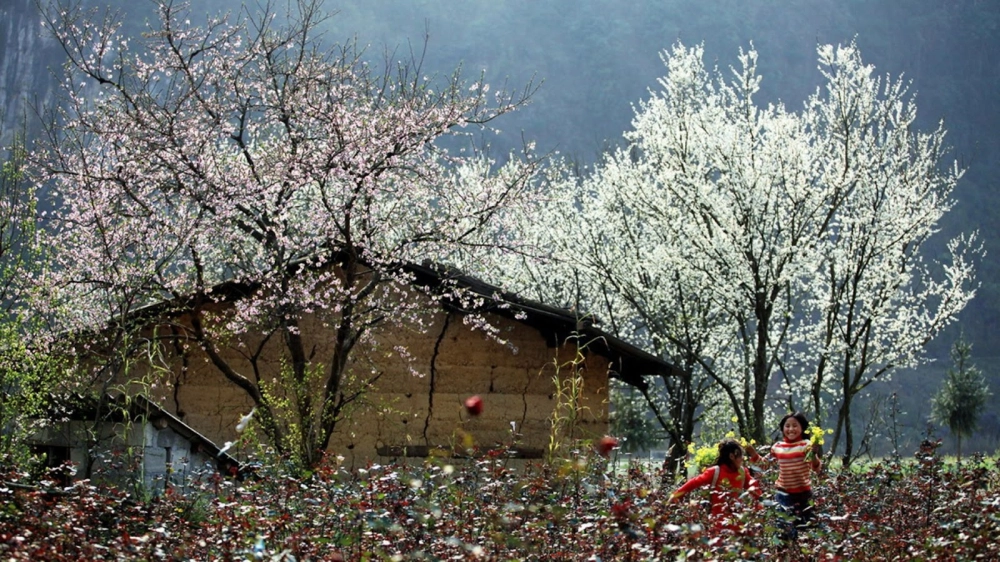1. General Introduction to Sa Pa Museum
Sa Pa Museum is located at No. 2 Fansipan Street, in Sa Pa ward, Lao Cai province. Its location is only about 1.5km from the town center, making it easy for tourists to travel by taxi or take a short walk. The building is located within the premises of the Lao Cai Provincial Information and Tourism Promotion Center, convenient for combining visits to many other attractions around the town.
Since its official opening in 2017, the museum has become one of the first places many tourists visit upon arriving in Sa Pa. It is not merely an exhibition space, but Sa Pa Museum also serves as a “cultural gateway”, helping visitors understand the origins and the cultural exchange among the ethnic groups living in this land. The artifacts here do not lie dormant behind glass cases, but are placed in realistic life contexts, creating a sense of closeness and ease of understanding.
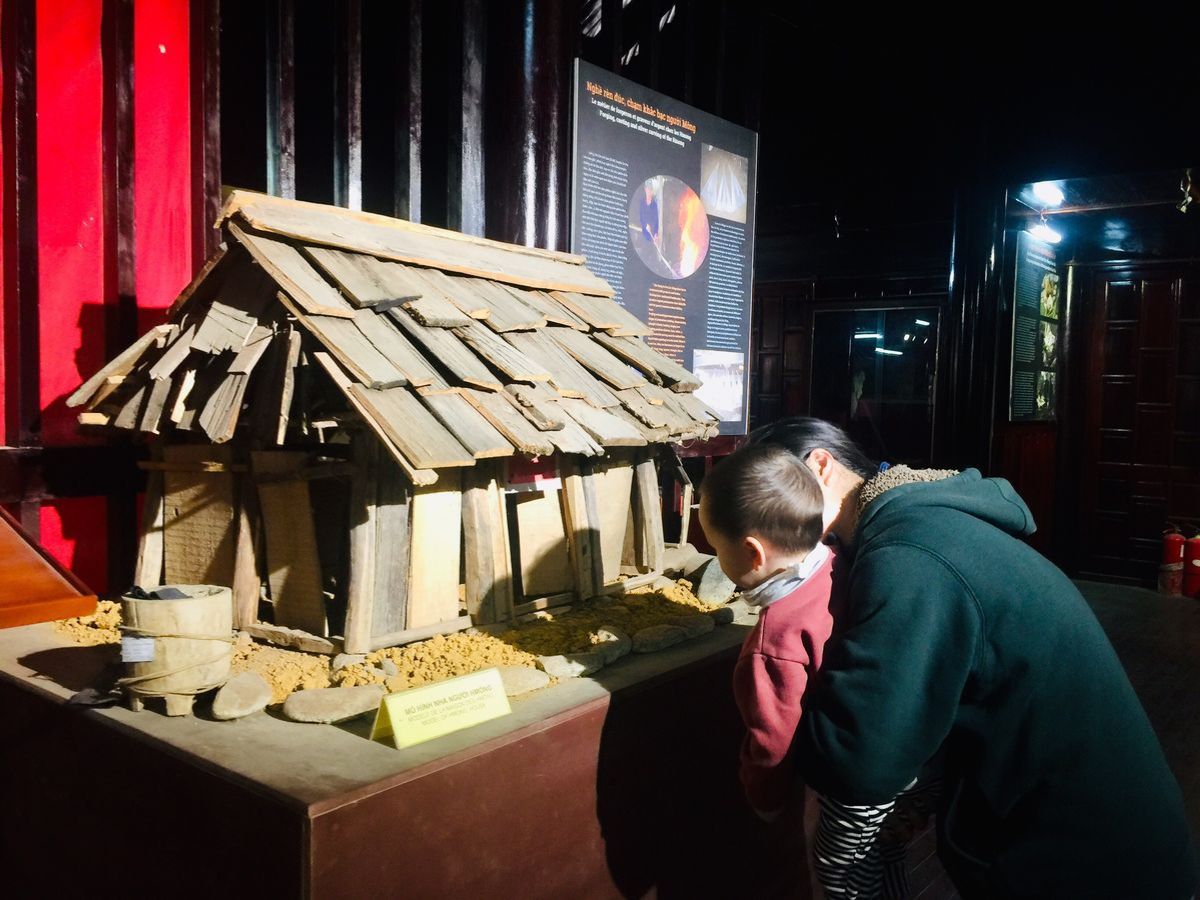
Models of standard-sized wooden houses are displayed at the museum. (Source: Collected)
The museum's value lies not only in its exhibits but also in its skillful storytelling through lighting, imagery, and models. As a result, visitors of all ages can feel the pulse of culture moving around them, rather than simply "looking at artifacts".
2. Unique Architectural Scale of Sa Pa Museum
2.1. Design Simulating Traditional Stilt Houses
The structure is built in the stilt house style of the Tay people – one of the oldest communities living in Sa Pa. The entire main structure uses natural wood combined with a sloping roof covered with wood-like tiles, creating a cozy and rustic feel from the first glance. The open space with many large windows allows natural light to flood in, making visitors feel as if they are stepping into the homes of the local people.
The special feature of the design is the blend of tradition and practicality. The exhibition areas are clearly separated but smoothly connected by wooden corridors and spacious staircases. Every small corner of the museum is meticulously cared for, from wall colors to floor materials, aiming to accurately recreate the spirit of "living with nature" of the highlanders.
2.2. Layout and Space of the Floors
The first floor of the museum is designed as an open space, dedicated to experiential exhibits. Visitors can easily encounter images of H'Mong women sitting at looms, or models of families gathering around a fire in traditional earthen houses. These seemingly small details help viewers vividly imagine the daily life of the local people.
The second floor houses over 200 rare artifacts, divided into specific themes such as costumes, production, beliefs, and the development history of Sa Pa. Each artifact has a clear Vietnamese caption, making information access easier. Visitors can leisurely walk through each exhibition area as if tracing the footsteps of their ancestors through different historical periods.
3. Artifact System and Exhibition Content at Sa Pa Museum
3.1. Collection of Over 200 Unique Artifacts
The museum's collection includes a full range of artifacts from traditional costumes, labor tools, to household items. The outfits of the H'Mong, Red Dao, or Giay people are displayed intact with accompanying accessories such as headscarves, silver bracelets, and waist bags. The vibrant colors and exquisite embroidery clearly demonstrate the craftsmanship of the local artisans.
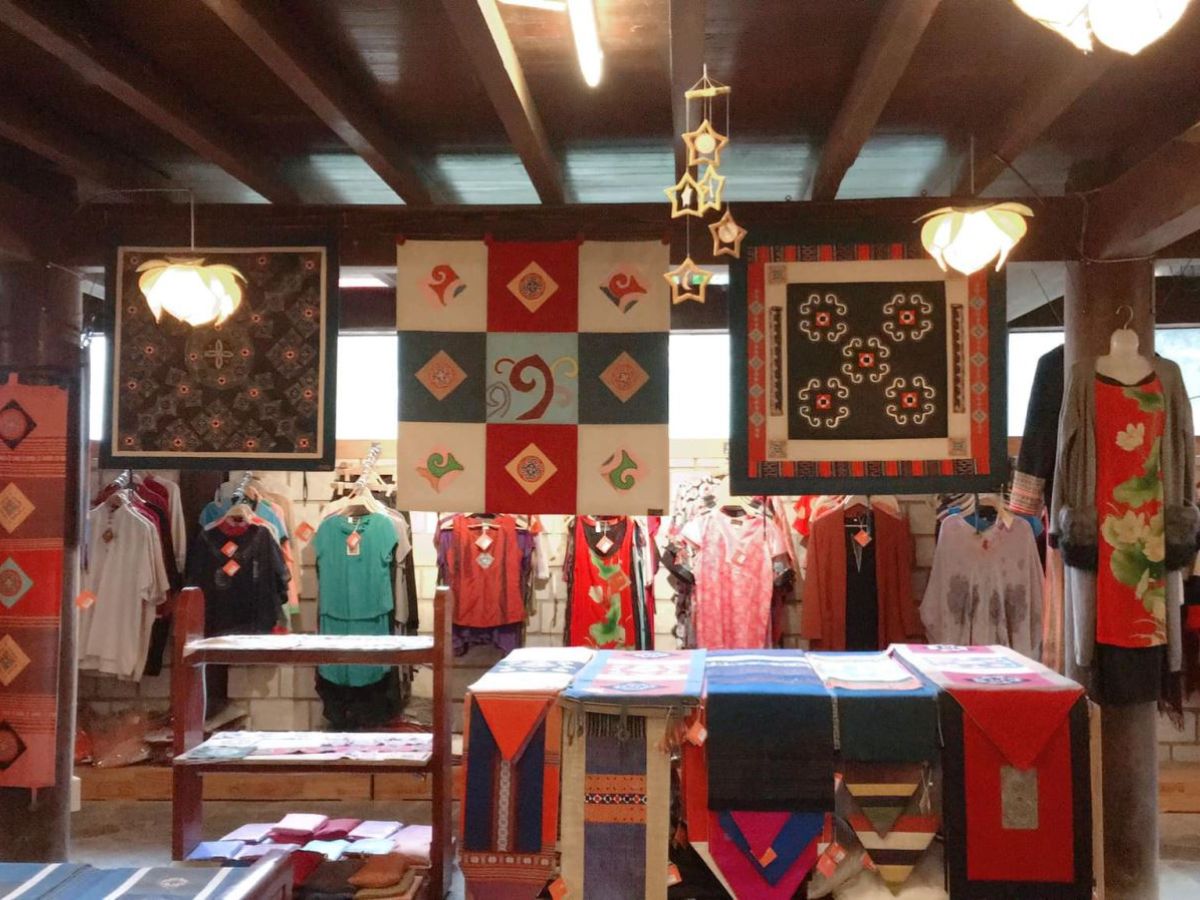
Ethnic costumes are displayed at the Sapa Museum. (Source: Collection)
Not only costumes, but the area dedicated to production tools also creates many impressions for visitors. Mortars, farming tools used for terraced fields, or looms decades old are all kept in their original state, helping viewers clearly understand the labor efforts of the highland residents through each period.
3.2. Special Exhibition Themes
The space recreating ancient houses is an interesting highlight of the Sapa Museum. Visitors have the opportunity to observe stilt house models with full living utensils, from the hearth to the ancestral altar area. The exhibition area on mountainous agricultural production helps visitors clearly visualize the scene of terraced farming, cultivation, and food processing.
The Cap Sac ritual of the Red Dao people is also simulated through models and actual artifacts, offering visitors a vivid insight into highland beliefs. The collection of documents on the history of migration, settlement, and development of Sapa through different periods is presented clearly and accessibly. Traditional festivals, wedding rituals, the sounds of khen flutes and bamboo flutes, and ancestral worship customs are all fully recreated by the museum, contributing to reflecting the rich spiritual life of the ethnic groups.

The wedding scene of the Red Dao people is realistically recreated. (Source: Collected)
4. Guide to Visiting Sa Pa Museum 2025
4.1. Opening Hours and Entrance Fee
Sa Pa Museum serves visitors from 7:30 AM to 11:30 AM and from 1:30 PM to 5:00 PM in the afternoon, operating regularly every day of the week, including holidays and Tet. An advantage that makes this place favored by tourists is that there is no entrance fee at all, creating conditions for anyone to easily access the cultural treasures of the highlands. Thanks to the flexible opening hours, you can arrange your visiting time to suit your travel itinerary in Sa Pa.
The lunch break from 11:30 AM to 1:30 PM is also very convenient for combining with enjoying specialty cuisine such as salmon, thang co, or black chicken at eateries around the area. After resting, you can return to visit the remaining unfinished areas to fully enjoy the cultural experience here.
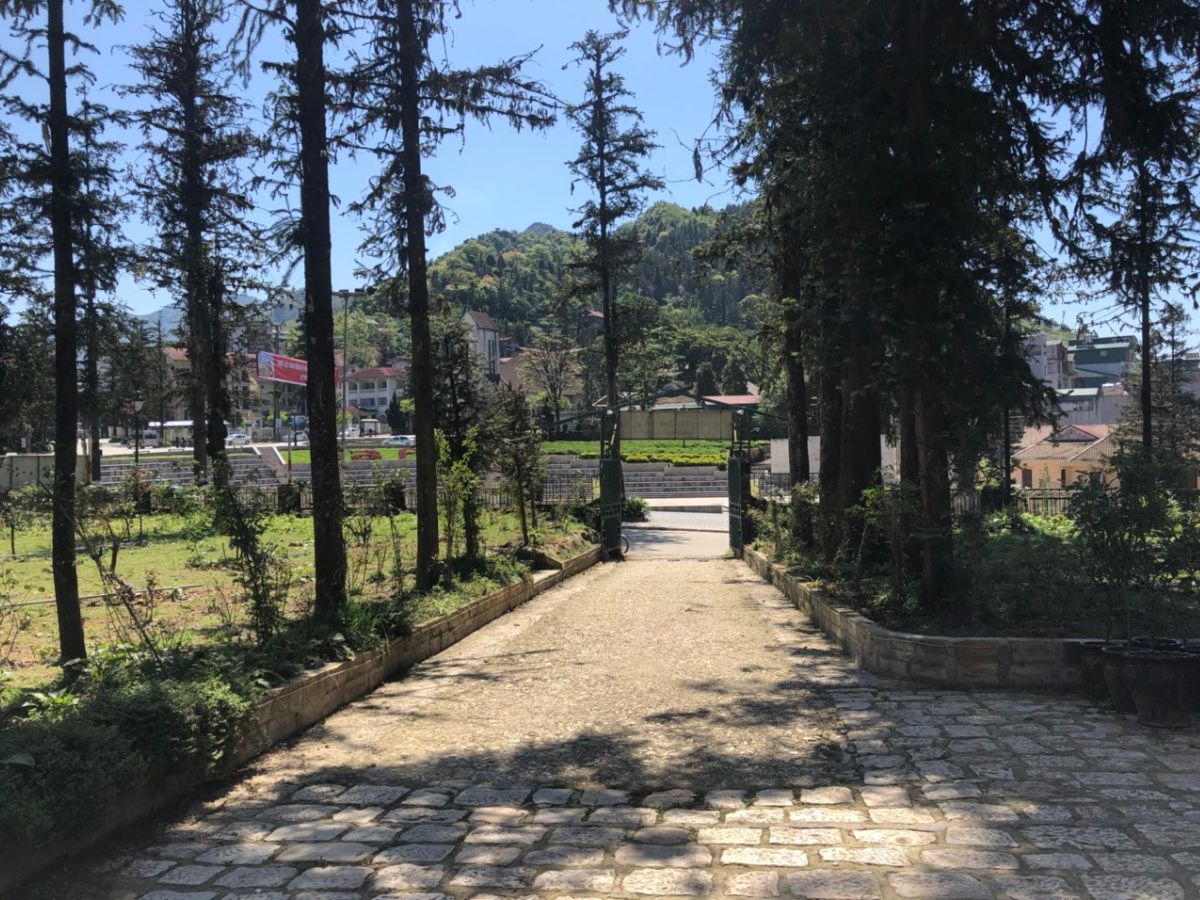
The path into the museum with two rows of lush green trees lining both sides. (Source: Collected)
4.2. Suggested Itinerary for Visiting
To explore the museum fully and systematically, visitors should start from the 1st floor – where models of daily life and folk rituals are displayed. Observing the overview first will help you better understand the more profound artifacts on the 2nd floor. After experiencing the highland life through the hearth, loom, or stilt house models, you can move upstairs to learn more about local history and beliefs.
During your visit, take time to read the descriptions carefully as they not only provide basic information but also explain the historical context of each artifact. If you enjoy photography, you can capture many memorable moments in the areas simulating family life or traditional festivals without worrying about restrictions.
4.3. Combining a Visit to Sa Pa Museum with Sun World Fansipan Legend
A reasonable itinerary for a day in Sa Pa is to start the morning at the Museum to feel the cultural depth, then move to Sun World Fansipan Legend in the afternoon to experience the majestic nature. It takes less than 10 minutes to travel from the museum to the Fansipan cable car station, and you can embark on a journey to touch the clouds with a panoramic view of the Northwest mountains and forests from an altitude of over 3,000m.
After conquering the altitude of 3,143m, visitors will experience a complete journey between nature and spirituality. Not only can you check-in at the 'Roof of Indochina' marker, but you can also hunt for sea of clouds in the early morning, immersing yourself in a dreamy landscape like a fairyland. The large-scale spiritual area on the Fansipan peak features many famous structures such as the 21m-tall bronze Great Amitabha Buddha Statue, Thanh Van Dac Lo, Kim Son Bao Thang Tu, Bao An Thien Tu, along with the Path of Arhats consisting of 18 majestic statues amidst the clouds. On mild sunny days, the temple bells echoing through the sea of clouds create an unforgettable sense of tranquility. Visitors can also enjoy a warm cup of tea at the Fansipan station, watch ethnic cultural performances at Ban May, or participate in the New Year's prayer ceremony – a sacred yet deeply emotional experience.

Join Sun World Fansipan Legend to conquer the "Roof of Indochina". (Source: Collected)
This combination creates a seamless chain of emotions – from understanding the formation history of the local community to admiring the beauty of natural wonders. If you have more time, you can also visit the central Sa Pa market or villages like Cat Cat, Ta Van to clearly feel the intersection between tradition and modern life, as well as to make your Sa Pa exploration journey more complete. .
5. Educational value and cultural significance of the Sa Pa Museum
5.1. Sa Pa Museum
The Sa Pa Museum is not merely a place to store artifacts, but also a space that strongly inspires national identity. Each costume, each household item, or recreated model carries a story about the resilient vitality of the highlanders through generations. When admiring meticulously hand-embroidered dresses or time-worn looms, visitors can feel the pride and love for heritage of the people of Sa Pa.

Traditional costumes and daily activities of the ethnic people living in Sa Pa are recreated in an accessible way in the museum. (Source: Collection)
The accessible and interactive display method helps viewers not feel bored like many other traditional museums. Thanks to this, cultural values that seem foreign become more familiar, understandable, and relatable to both Vietnamese tourists and international friends.
5.2. Role as a research and learning destination for pupils, students, and tourists
Sa Pa Museum is also an important address for learning and research activities of pupils, students, and those interested in anthropology, history, or ethnic culture. The system of artifacts is arranged logically, helping viewers easily grasp the development process of the Northwest community through each period. Not only written materials, but also visual models and realistic sounds make learning more vivid than ever.
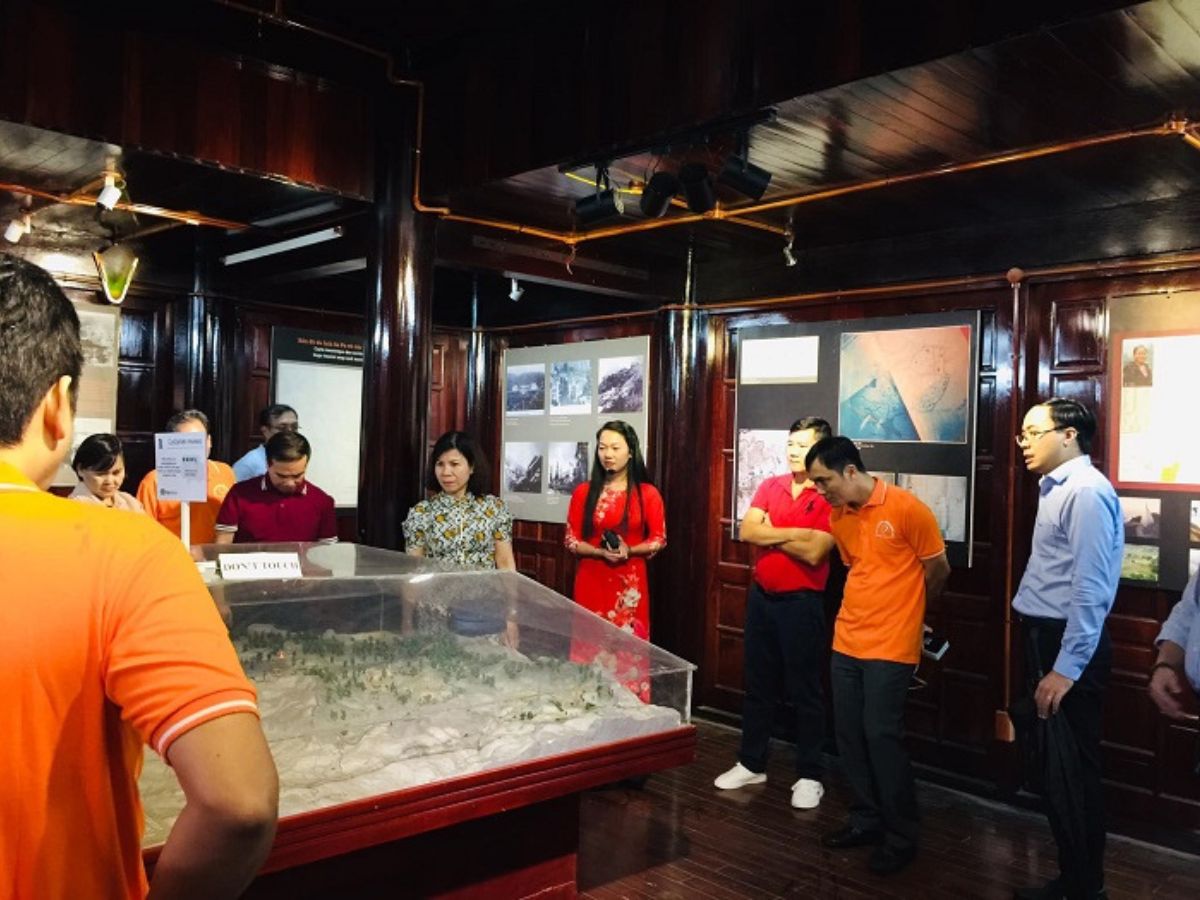
Sapa Museum - A place that authentically recreates the beauty of the daily life of ethnic minorities in the highlands. (Source: Collected)
After each visit, many young people are motivated to learn more deeply about the origins of their ethnic culture. This not only contributes to preserving traditions but also creates a foundation for spreading Vietnamese cultural values in the context of integration. With such a special role, Sapa Museum deserves to be an indispensable destination in every journey to explore the Northwest.




